| Listing 1 - 10 of 67 | << page >> |
Sort by
|
Book
ISBN: 9780387684413 9780387571850 9780387955674 9781493938209 0387955674 9786613568786 1280390867 0387684417 Year: 2010 Publisher: New York, NY : Springer New York : Imprint: Springer,
Abstract | Keywords | Export | Availability | Bookmark
 Loading...
Loading...Choose an application
- Reference Manager
- EndNote
- RefWorks (Direct export to RefWorks)
Intuitively, a sequence such as 101010101010101010… does not seem random, whereas 101101011101010100…, obtained using coin tosses, does. How can we reconcile this intuition with the fact that both are statistically equally likely? What does it mean to say that an individual mathematical object such as a real number is random, or to say that one real is more random than another? And what is the relationship between randomness and computational power. The theory of algorithmic randomness uses tools from computability theory and algorithmic information theory to address questions such as these. Much of this theory can be seen as exploring the relationships between three fundamental concepts: relative computability, as measured by notions such as Turing reducibility; information content, as measured by notions such as Kolmogorov complexity; and randomness of individual objects, as first successfully defined by Martin-Löf. Although algorithmic randomness has been studied for several decades, a dramatic upsurge of interest in the area, starting in the late 1990s, has led to significant advances. This is the first comprehensive treatment of this important field, designed to be both a reference tool for experts and a guide for newcomers. It surveys a broad section of work in the area, and presents most of its major results and techniques in depth. Its organization is designed to guide the reader through this large body of work, providing context for its many concepts and theorems, discussing their significance, and highlighting their interactions. It includes a discussion of effective dimension, which allows us to assign concepts like Hausdorff dimension to individual reals, and a focused but detailed introduction to computability theory. It will be of interest to researchers and students in computability theory, algorithmic information theory, and theoretical computer science.
Complex analysis --- Computer science --- Computer. Automation --- toegepaste informatica --- complexe analyse (wiskunde) --- computers --- algoritmen --- Computable functions. --- Computational complexity. --- Algorithms. --- Computers. --- Algorithm Analysis and Problem Complexity. --- Theory of Computation. --- Computation by Abstract Devices. --- Automatic computers --- Automatic data processors --- Computer hardware --- Computing machines (Computers) --- Electronic brains --- Electronic calculating-machines --- Electronic computers --- Hardware, Computer --- Computer systems --- Cybernetics --- Machine theory --- Calculators --- Cyberspace --- Algorism --- Algebra --- Arithmetic --- Foundations
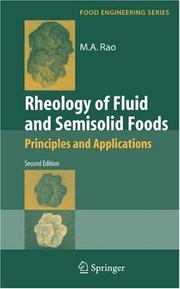
ISBN: 9780387709307 0387709290 9780387709291 1441943676 0387709304 Year: 2007 Publisher: New York, NY : Springer US : Imprint: Springer,
Abstract | Keywords | Export | Availability | Bookmark
 Loading...
Loading...Choose an application
- Reference Manager
- EndNote
- RefWorks (Direct export to RefWorks)
The second edition of Rheology of Fluid and Semisolid Foods: Principles and Application, examines the concepts needed to characterize rheological behavior of fluid and semisolid foods and to use various ingredients to develop desirable flow properties in fluid foods, and structure in gelled systems. It covers important applications of rheology to sensory assessment and swallowing, and handling and processing foods. All of the chapters have been updated to help readers better understand the importance rheological properties play in food science and utilize these properties to characterize food. About the Author: M. A. "Andy" Rao is a Professor Emeritus of Food Engineering, Cornell University. He received the Scott Blair Award for Excellence in Rheology of American Association of Cereal Chemists), the Distinguished Food Engineering Award of American Society of Agricultural Engineers, and elected a Fellow of the Institute of Food Technologists. Dr. Rao helped develop the "Vane Method" measurement of yield stress for a variety of food products -- a standard measurement tool used by the food industry today. He has actively supported and promoted food engineering through cooperative professional teaching and research activities in Brazil, India, Mexico, New Zealand, Portugal, and Thailand.
Chemistry. --- Food Science. --- Food science. --- Chimie --- Food -- Testing. --- Rheology. --- Food --- Rheology --- Biomedical Engineering --- Chemical Engineering --- Health & Biological Sciences --- Chemical & Materials Engineering --- Engineering & Applied Sciences --- Testing --- Testing. --- Computers. --- Computation by Abstract Devices. --- Biotechnology. --- Colloids --- Deformations (Mechanics) --- Elasticity --- Plasticity --- Viscosity --- Computer science. --- Informatics --- Science --- Food—Biotechnology. --- Automatic computers --- Automatic data processors --- Computer hardware --- Computing machines (Computers) --- Electronic brains --- Electronic calculating-machines --- Electronic computers --- Hardware, Computer --- Computer systems --- Cybernetics --- Machine theory --- Calculators --- Cyberspace --- Theory of Computation. --- Food technology --- Chemical engineering
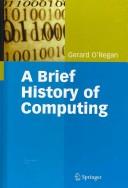
ISBN: 1848000847 1848000839 1849967253 9781848000834 9781848000841 Year: 2008 Publisher: London : Springer London : Imprint: Springer,
Abstract | Keywords | Export | Availability | Bookmark
 Loading...
Loading...Choose an application
- Reference Manager
- EndNote
- RefWorks (Direct export to RefWorks)
The history of computing has its origins at the outset of civilization. As towns and communities evolved there was a need for increasingly sophisticated calculations. This book traces the evolution of computation, from early civilisations 3000 B.C. to the latest key developments in modern times. This useful and lively text provides a comprehensive introduction to the key topics in the history of computing, in an easy-to-follow and concise manner. It covers the significant areas and events in the field - from the ancient Egyptians through to the present day - and both gives the reader a flavour of the history and stimulates further study in the subject. Features: • Ideal for undergraduate courses, it offers many pedagogical features such as chapter-opening key topics, chapter introductions, exercises, chapter summaries, glossary, etc. • Offers detailed information on major figures in computing, such as Boole, Babbage, Shannon , Turing and Von Neumann • Includes a history of programming languages, including syntax and semantics • Presents an overview of the history of software engineering • Discusses the progress of artificial intelligence, with extension to such key disciplines as philosophy, psychology, linguistics, neural networks and cybernetics • Examines the history of the Internet revolution, World Wide Web and Dot-Com Bubble • Follows the evolution of a number of major technology companies such as IBM, Motorola and Microsoft Focusing on the fundamental areas in the computing field, this clearly written and broad-ranging text will capture the attention of the reader and greatly benefit computer science students. In addition, it is suitable for self-study, and will also be of interest to the more casual reader. Dr Gerard O’Regan is a CMMI software process improvement consultant with research interests including software quality and software process improvement; mathematical approaches to software quality; and the history of computing. He has published A Practical Approach to Software Quality and Mathematical Approaches to Software Quality. .
Computer industry --- Computers --- History. --- Electronic industries --- Information theory. --- Computer science. --- Science (General). --- Theory of Computation. --- History of Computing. --- History of Science. --- Popular Science, general. --- Annals --- Auxiliary sciences of history --- Informatics --- Science --- Communication theory --- Communication --- Cybernetics --- Mathematics. --- Computers. --- Popular works. --- Automatic computers --- Automatic data processors --- Computer hardware --- Computing machines (Computers) --- Electronic brains --- Electronic calculating-machines --- Electronic computers --- Hardware, Computer --- Computer systems --- Machine theory --- Calculators --- Cyberspace --- Computer science --- Informatique --- Histoire. --- Industrie et commerce
Book
ISBN: 9781846289057 1846289041 9781846289040 9786612823343 184628905X 1282823345 Year: 2007 Publisher: London : Springer,
Abstract | Keywords | Export | Availability | Bookmark
 Loading...
Loading...Choose an application
- Reference Manager
- EndNote
- RefWorks (Direct export to RefWorks)
This book covers the relationship between information and communication technologies (ICTs) and communities – both physical and virtual. The chapters deal with such subjects as online social network communities, implicit online communities, tools for researching communities, user generated content communities, communities of practice, and trust in communities. Among the many contexts for community technology applications studied in these chapters are businesses and professional settings, health care, game communities, e-government, rural communities, low income communities and physical neighborhoods. Collectively, they demonstrate the dynamic and interdisciplinary nature of evolving communities and technologies scholarship.
Computer Science. --- Information Systems and Communication Service. --- User Interfaces and Human Computer Interaction. --- Computer Appl. in Social and Behavioral Sciences. --- Computer science. --- Information systems. --- Social sciences --- Informatique --- Sciences sociales --- Data processing. --- Information storage and retrieval systems --- Systèmes d'information --- Computers -- Social aspects -- Congresses. --- Computers and civilization -- Congresses. --- Information society -- Congresses. --- Computers and civilization --- Information society --- Computers --- Engineering & Applied Sciences --- Computer Science --- Social aspects --- Automatic computers --- Automatic data processors --- Computer hardware --- Computing machines (Computers) --- Electronic brains --- Electronic calculating-machines --- Electronic computers --- Hardware, Computer --- Computers. --- User interfaces (Computer systems). --- Application software. --- Computer systems --- Cybernetics --- Machine theory --- Calculators --- Cyberspace
Book
ISBN: 9781846284779 1846284775 Year: 2006 Publisher: London : Springer London : Imprint: Springer,
Abstract | Keywords | Export | Availability | Bookmark
 Loading...
Loading...Choose an application
- Reference Manager
- EndNote
- RefWorks (Direct export to RefWorks)
In these early years of the 21st Century, researchers in the field of computing are delving ever further into the new possibilities of the science and to the primary tools that form its foundations. The theory behind computation has never been more important. Theory of Computation is a unique textbook that serves the dual purposes of covering core material in the foundations of computing, as well as providing an introduction to some more advanced contemporary topics. This innovative text focuses primarily, although by no means exclusively, on computational complexity theory: the classification of computational problems in terms of their inherent complexity. It incorporates rigorous treatment of computational models, such as deterministic, nondeterministic, and alternating Turing machines; circuits; probabilistic machines; interactive proof systems; automata on infinite objects; and logical formalisms. Although the complexity universe stops at polynomial space in most treatments, this work also examines higher complexity levels all the way up through primitive and partial recursive functions and the arithmetic and analytic hierarchies. Topics and features: • Provides in-depth coverage of both classical and contemporary approaches in one useful, concise volume • Organized into readily applicable, self-contained primary and secondary lectures • Contains more than 180 homework exercises of varying difficulty levels, many with hints and solutions • Includes approximation and inapproximation results, and some lower bounds • Treats complexity theory and classical recursion theory in a unified framework Advanced undergraduates and first-year graduates in Computer Science or Mathematics will receive a thorough grounding in the core theory of computation and computational complexity, as well as an introduction to advanced contemporary topics for further study. Computing professionals and other scientists interested in learning more about these topics will also find this text extremely useful. Prof. Dexter Kozen teaches at Cornell University, Ithaca, New York, and has comprehensively class-tested this book’s content. He authored the highly successful Automata and Computability, which offers an introduction to the basic theoretical models of computability, and The Design and Analysis of Algorithms.
Computer. Automation --- informatica --- informaticaonderzoek --- complexe analyse (wiskunde) --- wiskunde --- Complex analysis --- Computer science --- toegepaste informatica --- Computational complexity. --- Recursion theory. --- Mathematics. --- Information theory. --- Computer science. --- Computer software. --- Theory of Computation. --- Computational Mathematics and Numerical Analysis. --- Computational Science and Engineering. --- Computation by Abstract Devices. --- Algorithm Analysis and Problem Complexity. --- Software, Computer --- Computer systems --- Informatics --- Science --- Communication theory --- Communication --- Cybernetics --- Computer mathematics --- Discrete mathematics --- Electronic data processing --- Mathematics --- Computers. --- Computer mathematics. --- Algorithms. --- Algorism --- Algebra --- Arithmetic --- Automatic computers --- Automatic data processors --- Computer hardware --- Computing machines (Computers) --- Electronic brains --- Electronic calculating-machines --- Electronic computers --- Hardware, Computer --- Machine theory --- Calculators --- Cyberspace --- Foundations --- Data processing.
Book
ISBN: 9781846288418 184628841X Year: 2008 Publisher: London Springer London
Abstract | Keywords | Export | Availability | Bookmark
 Loading...
Loading...Choose an application
- Reference Manager
- EndNote
- RefWorks (Direct export to RefWorks)
Distributed processing has a strong theoretical foundation, but many day-to-day practitioners make limited use of the advantages this theory can give them. The result includes unreliable systems with obscure and intermittent failures that can cost time, money and in extreme cases, lives. Reliable construction of distributed and concurrent systems must incorporate theory in practice. This book provides a concise presentation of the theory closely linked to the practical realisation of these concepts. This easy-to-follow textbook focuses on practical issues of building working distributed systems and gives an overview of the basic theory, principles and techniques, whilst illustrating how these fit together, via the process of building interesting, non-trivial systems. Topics and features: ¢ Provides all the elements needed for a complete development of a distributed system, from theory to practice ¢ Offers an integrated approach to the field of distributed processing, and presents a coherent view of the field as a practical subject ¢ Links theoretical models of concurrency with practical realisation of systems ¢ Contains many examples from C, Java Ada and Eiffel, as well as case studies ¢ Considers important aspects of the engineering process, including models that can be used to assess and analyse parts of distributed systems, implementation techniques, as well as protocols and security concerns ¢ Many pedagogical tools: chapter summaries, exercises (with sketch solutions and hints), comprehensive glossary, Internet support for students and instructors, accessible at http://www.scm.tees.ac.uk/p.j.brooke/dpb/. ¢ Ideal for use by lecturers as a coherent one-term course or module on distributed systems Written with undergraduates in mind, especially relevant for intermediate-level students, this user-friendly textbook will prove a clear and comprehensive guide to the topic and the foundations for a methodological approach to building these systems. Dr Phil Brooke is a lecturer in computer science at the University of Teesside, and Dr Richard Paige is a lecturer in computer science at the University of York. Both have extensive teaching experience, from which this textbook has grown.
Programming --- Computer. Automation --- computerbesturingssystemen --- programmeren (informatica) --- Processament distribuït de dades --- Computers. --- Software engineering. --- Theory of Computation. --- Software Engineering/Programming and Operating Systems. --- Computer software engineering --- Engineering --- Automatic computers --- Automatic data processors --- Computer hardware --- Computing machines (Computers) --- Electronic brains --- Electronic calculating-machines --- Electronic computers --- Hardware, Computer --- Computer systems --- Cybernetics --- Machine theory --- Calculators --- Cyberspace --- Descentralització dels recursos de tractament (Informàtica) --- Informàtica --- Informàtica distribuïda --- Procés distribuït --- Processament de dades distribuït --- Processament de dades electròniques --- Processament electrònic de dades --- Processament distribuït (Informàtica) --- Sistemes distribuïts (Informàtica) --- Tractament distribuït --- Ordinadors, Xarxes d' --- Processament distribuït --- Distribució --- Processos de distribució
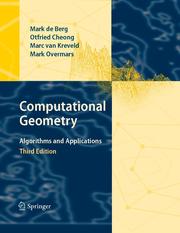
ISBN: 9783540779742 9783540779735 3540779744 Year: 2008 Publisher: Berlin : Springer,
Abstract | Keywords | Export | Availability | Bookmark
 Loading...
Loading...Choose an application
- Reference Manager
- EndNote
- RefWorks (Direct export to RefWorks)
Computational geometry emerged from the field of algorithms design and analysis in the late 1970s. It has grown into a recognized discipline with its own journals, conferences, and a large community of active researchers. The success of the field as a research discipline can on the one hand be explained from the beauty of the problems studied and the solutions obtained, and, on the other hand, by the many application domains - computer graphics, geographic information systems (GIS), robotics, and others - in which geometric algorithms play a fundamental role. For many geometric problems the early algorithmic solutions were either slow or difficult to understand and implement. In recent years a number of new algorithmic techniques have been developed that improved and simplified many of the previous approaches. In this textbook we have tried to make these modern algorithmic solutions accessible to a large audience. The book has been written as a textbook for a course in computational geometry, but it can also be used for self-study.
Artificial intelligence. Robotics. Simulation. Graphics --- complexe analyse (wiskunde) --- grafische vormgeving --- informatica --- systeemtheorie --- wiskunde --- KI (kunstmatige intelligentie) --- geologie --- geometrie --- informatietheorie --- Computers. --- Geometry. --- Computer science --- Earth sciences. --- Computer graphics. --- Algorithms. --- Theory of Computation. --- Math Applications in Computer Science. --- Earth Sciences, general. --- Computer Graphics. --- Algorithm Analysis and Problem Complexity. --- Mathematics. --- Algorism --- Algebra --- Arithmetic --- Automatic drafting --- Graphic data processing --- Graphics, Computer --- Computer art --- Graphic arts --- Electronic data processing --- Engineering graphics --- Image processing --- Geosciences --- Environmental sciences --- Physical sciences --- Computer mathematics --- Mathematics --- Euclid's Elements --- Automatic computers --- Automatic data processors --- Computer hardware --- Computing machines (Computers) --- Electronic brains --- Electronic calculating-machines --- Electronic computers --- Hardware, Computer --- Computer systems --- Cybernetics --- Machine theory --- Calculators --- Cyberspace --- Foundations --- Digital techniques
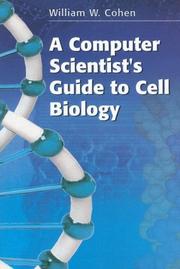
ISBN: 1280957794 9786610957798 0387482784 9780387482750 038748275X 9780387482781 Year: 2007 Publisher: New York, NY : Springer US : Imprint: Springer,
Abstract | Keywords | Export | Availability | Bookmark
 Loading...
Loading...Choose an application
- Reference Manager
- EndNote
- RefWorks (Direct export to RefWorks)
This practical guide provides a succinct treatment of the general concepts of cell biology, furnishing the computer scientist with the tools necessary to read and understand current literature in the field. The book explores three different facets of biology: biological systems, experimental methods, and language and nomenclature. After a brief introduction to cell biology, the text focuses on the principles behind the most-widely used experimental procedures and mechanisms, relating them to well-understood concepts in computer science. The presentation of the material has been prepared for the reader’s quick grasp of the topic: comments on nomenclature and background notes can be ascertained at a glance, and essential vocabulary is boldfaced throughout the text for easy identification. Computer science researchers, professionals and computer science students will find this an incomparable resource and an excellent starting point for a more comprehensive examination of cell biology. "This concise book is an excellent introduction for computer scientists to the exciting revolution under way in molecular biology. It provides lucid, high-level descriptions of the fundamental molecular mechanisms of life, and discusses the computational principles involved. I wish this little gem was available when I was ‘learning the ropes’– it would have been my first choice of reading material." --Roni Rosenfeld, Carnegie Mellon University.
Cytology --- Bioinformatics. --- Bio-informatics --- Biological informatics --- Biology --- Information science --- Computational biology --- Systems biology --- Data processing. --- Data processing --- Cell biology --- Cellular biology --- Cells --- Cytologists --- Artificial intelligence. --- Engineering mathematics. --- Information theory. --- Computational Biology/Bioinformatics. --- Artificial Intelligence. --- Computer Appl. in Life Sciences. --- Mathematical and Computational Engineering. --- Theory of Computation. --- Communication theory --- Communication --- Cybernetics --- Engineering --- Engineering analysis --- Mathematical analysis --- AI (Artificial intelligence) --- Artificial thinking --- Electronic brains --- Intellectronics --- Intelligence, Artificial --- Intelligent machines --- Machine intelligence --- Thinking, Artificial --- Bionics --- Cognitive science --- Digital computer simulation --- Electronic data processing --- Logic machines --- Machine theory --- Self-organizing systems --- Simulation methods --- Fifth generation computers --- Neural computers --- Mathematics --- Bioinformatics . --- Computational biology . --- Applied mathematics. --- Computers. --- Automatic computers --- Automatic data processors --- Computer hardware --- Computing machines (Computers) --- Electronic calculating-machines --- Electronic computers --- Hardware, Computer --- Computer systems --- Calculators --- Cyberspace --- Bioinformatics --- 576 --- 576 Cellular and subcellular biology. Cytology --- Cellular and subcellular biology. Cytology
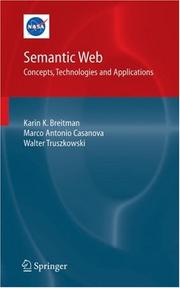
ISBN: 1846287103 9781846285813 184628581X 9781846287107 1849966214 Year: 2007 Publisher: London : Springer London : Imprint: Springer,
Abstract | Keywords | Export | Availability | Bookmark
 Loading...
Loading...Choose an application
- Reference Manager
- EndNote
- RefWorks (Direct export to RefWorks)
This book provides a well-paced introduction to the Semantic Web, which is gaining in understanding and acceptance as new applications are realized in industry, academic, and government environments. It provides a succinct account of this new Web, its concepts, technologies and applications, and in particular demonstrates how Semantic Web technologies may be integrated and realised in several application domains including: software agents, semantic desktops, fine arts, and geospatial applications. The book is intended as a reference text on the Semantic Web for software engineers, database and information technology students, academics and practitioners. It differs from other available books on the topic because, rather than presenting the Semantic Web as a quilt of disconnected topics, it provides a comprehensible body of concepts and related technologies. The book reflects the authors’ experience in research, graduate teaching, corporate training, industry and government projects grounded on the Semantic Web.
Computer science. --- Software engineering. --- Computers. --- Database management. --- Computer Science. --- Computer Science, general. --- Popular Computer Science. --- Database Management. --- Information Systems Applications (incl. Internet). --- Software Engineering. --- Models and Principles. --- Data base management --- Data services (Database management) --- Database management services --- DBMS (Computer science) --- Generalized data management systems --- Services, Database management --- Systems, Database management --- Systems, Generalized database management --- Electronic data processing --- Automatic computers --- Automatic data processors --- Computer hardware --- Computing machines (Computers) --- Electronic brains --- Electronic calculating-machines --- Electronic computers --- Hardware, Computer --- Computer systems --- Cybernetics --- Machine theory --- Calculators --- Cyberspace --- Computer software engineering --- Engineering --- Informatics --- Science --- Semantic Web. --- Semantic integration (Computer systems) --- Semantic networks (Information theory) --- World Wide Web --- Microformats --- Application software. --- Application computer programs --- Application computer software --- Applications software --- Apps (Computer software) --- Computer software
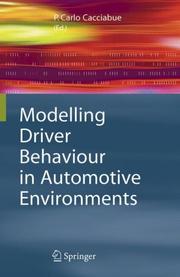
ISBN: 9781846286179 9781846286186 1846286174 1849966281 1846286182 Year: 2007 Publisher: London : Springer London : Imprint: Springer,
Abstract | Keywords | Export | Availability | Bookmark
 Loading...
Loading...Choose an application
- Reference Manager
- EndNote
- RefWorks (Direct export to RefWorks)
The study of all technological systems, in terms of design, safety assessment or training purposes requires that significant attention is dedicated to the human perspective. Techniques for user-centred design are normally applied and exploited before implementing new control devices or safety systems that are managed by a human user or operator. This demands that appropriate models of Human Machine Interaction and associated taxonomies for classifying human behaviour are available for theoretical and practical application. In the automotive environment, the paradigm of the joint human-machine system is called the "Driver-Vehicle-Environment" (DVE) model. Several studies have pointed out the unique nature of this domain, which can refer the standardisation and normalisation of behaviours, contexts and technology. This book presents a general overview of the various factors that contribute to modelling human behaviour in this specialised environment. All of these aspects contribute to creating the overall picture of the DVE model, and demonstrate the scope and dimensions of the many different interaction processes that demand modelling consideration. This long-awaited volume, written by world experts in the field, presents state-of-the-art research and case studies. It will be invaluable reading for professional practitioners graduate students, researchers and alike. Pietro Carlo Cacciabue is a senior scientist at the Institute for the Protection and Security of the Citizen, within the Joint Research Centre of the European Commission, Ispra, Italy. He is the author of two monographs and several book and journal publications relating to safety engineering and human-machine interaction in the domains of energy production and transportation. He is the principal Editor, together with Erik Hollnagel, of The International Journal of Cognition, Technology & Work.
Motorcars engineering --- auto's --- Road traffic --- Computer Science. --- Models and Principles. --- User Interfaces and Human Computer Interaction. --- Information Systems and Communication Service. --- Computer science. --- Information systems. --- Informatique --- Information storage and retrieval systems --- Systèmes d'information --- Driver assistance systems. --- Human behavior -- Mathematical models. --- Motor vehicle driving -- Mathematical models. --- Automobiles --- Motor vehicle driving --- Human behavior --- Driver assistance systems --- Human-machine systems --- Human engineering --- Engineering & Applied Sciences --- Mechanical Engineering --- Automotive Engineering --- Computer Science --- Automatic control --- Mathematical models --- Human engineering. --- Mathematical models. --- Ergonomics --- Human factors in engineering design --- Driving, Motor vehicle --- Motor vehicle operation --- Computers. --- User interfaces (Computer systems). --- Interfaces, User (Computer systems) --- Human-computer interaction --- Automatic computers --- Automatic data processors --- Computer hardware --- Computing machines (Computers) --- Electronic brains --- Electronic calculating-machines --- Electronic computers --- Hardware, Computer --- Computer systems --- Cybernetics --- Machine theory --- Calculators --- Cyberspace --- Informatics --- Science --- Bioengineering --- Environmental engineering --- Industrial engineering --- Human comfort --- Human-robot interaction --- Sociotechnical systems --- Human behavior models --- Electronic equipment
| Listing 1 - 10 of 67 | << page >> |
Sort by
|

 Search
Search Feedback
Feedback About
About Help
Help News
News